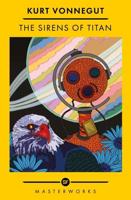Publisher's Synopsis
This premium quality volume includes the complete text of three of H. G. Wells' science fiction classics -- The Time Machine, The Invisible Man and The Island of Dr. Moreau -- selected for this collection because of their enduring influence on the science fiction genre.
This freshly edited and newly typeset edition features a large 7.44"x9.69 page size and is printed on heavyweight bright white paper with a fully laminated cover featuring an original full color design. Also included in this volume are page headers and an introductory biographical sketch discussing Wells' life, work and continuing literary significance. The three tales included in this volume share the common theme of humanity's efforts, with varying success, to advance and control science, and the effect of the individual scientist on the outcome, as well as the impact of scientific discovery on the individual scientist. A common theme in the science fiction genre, these tales by Wells represent three of the earliest and most influential such stories. A matching volume, The Best of H.G. Wells, Volume I: The War of the Worlds, The First Men in the Moon ISBN-13: 978-1494767778, ISBN-10: 1494767775, is also available. Herbert George Wells (1866-1946), was born to shopkeepers who had previously been employed as domestic servants. When an injury ended his father's income as a professional cricketer, Wells' parents, on the brink of poverty, apprenticed him to a draper, but he was dismissed after a short time and subsequently became a "pupil-teacher" in a system where older students helped teach younger students. Despite having little formal education, Wells, a voracious reader, won a scholarship to the Normal School of Science in London where he completed courses in biology and physics, but left the school in 1887 after failing geology and losing his scholarship. Best known today for his science fiction works, Wells' first published book was a biology textbook in 1893. With the publication of The Time Machine in 1895 Wells began a long and successful writing career. The next several years saw the publication of The War of the Worlds, The Invisible Man, The Island of Doctor Moreau, The First Men in the Moon and many other works ranging from humorous social commentary novels to non-fiction and political polemics. In 1920, he published his landmark Outline of History, which became the model for "outline" texts in a variety of disciplines. Over time Wells' works became increasingly political, contentious and argumentative and only his early science fiction novels are widely read today. Those novels provide insights into the science and society of Wells' day and are interesting for their prediction of future events and scientific developments. Wells' science fiction tales are also very entertaining and easy to read. Many of his story elements, like time travel, hostile aliens, mutant creatures and space travel, became common themes in science fiction In literary circles, Wells' comic novels, virtually unknown to casual readers of today, are considered outstanding examples of 20th century British literature, and Wells' work is regarded as one of the best examples of pre-World War I liberal optimism. Yet Wells' social optimism is tempered, particularly in his science fiction works, and he clearly shares the sense of dread of science and technology gone out-of-control that runs through Victorian and post-Victorian British thought, with mad scientists and mass destruction seemingly lying in wait for unwary humanity. Wells is often referred to as one of "The Fathers of Science Fiction," and "science fiction" today might look very different without Wells' contributions.









